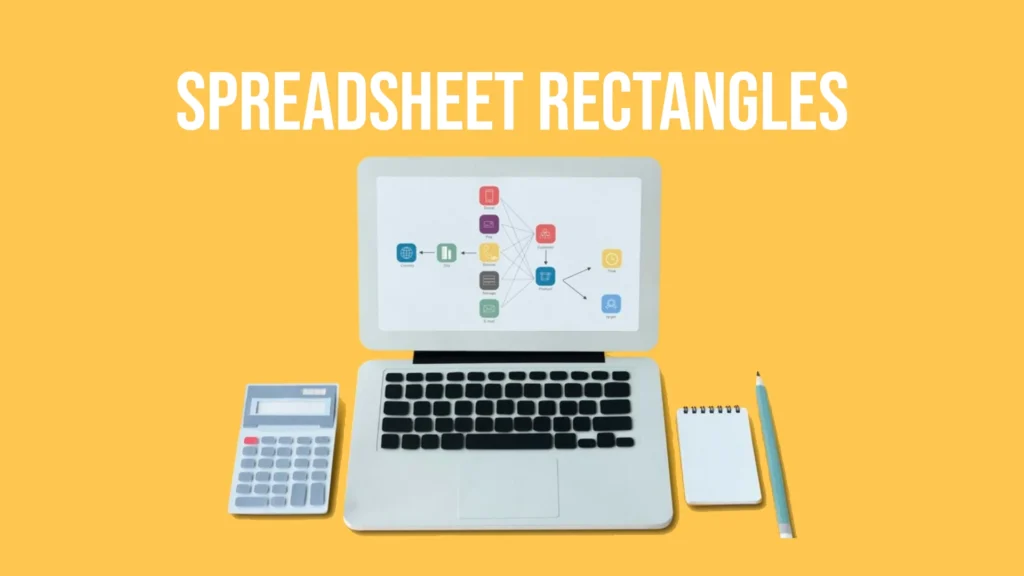Spreadsheet Rectangles: An In-Depth Exploration
When you open a spreadsheet application like Microsoft Excel or Google Sheets, you are greeted by a grid composed of countless cells arranged in rows and columns. These cells are often referred to as “spreadsheet rectangles.” Though they might appear simple at first glance, these rectangles are integral to the functionality and versatility of spreadsheet software. This article explores the concept of spreadsheet rectangles, their uses, their importance, and how they help in data management, analysis, and decision-making.
What Are Spreadsheet Rectangles?
In the simplest terms, a spreadsheet rectangle is any individual cell in a spreadsheet grid. Each cell is a small, rectangular area defined by the intersection of a row and a column. For example, in a spreadsheet, the cell located at the intersection of the third row and second column would be referred to as “B3.” This unique identifier allows users to navigate, organize, and manipulate data within the spreadsheet.
These rectangles can hold various types of data, such as text, numbers, formulas, dates, and even hyperlinks. The ability to format and customize each rectangle independently makes spreadsheets incredibly powerful tools for a variety of tasks, ranging from simple data entry to complex data analysis.
The Structure of Spreadsheet Rectangles
Rows and Columns
Each spreadsheet rectangle is part of a larger grid formed by rows (horizontal) and columns (vertical). Rows are typically numbered (1, 2, 3, etc.), while columns are labeled alphabetically (A, B, C, etc.). The grid can be expanded infinitely, allowing users to add as many rectangles (cells) as needed for their particular data set.
Cell Addressing
Every rectangle in a spreadsheet has a unique address or reference, such as A1, B2, C3, and so on. This referencing system is crucial for performing operations within the spreadsheet. For instance, to sum two values located in different rectangles (cells), a user might write a formula like =A1+B2. This flexibility allows for complex calculations and data manipulations across large datasets.
Cell Ranges
While individual rectangles are fundamental, ranges—groups of adjacent cells—are often used in spreadsheet operations. A range can be a single row, column, or a block of cells. For example, the range A1
refers to all rectangles from A1 to A10 in a single column, while B2
encompasses a rectangular block of rectangles spanning columns B to D and rows 2 to 5. Working with ranges enables users to perform batch operations such as sorting, filtering, and applying formulas across multiple cells simultaneously.
Uses of Spreadsheet Rectangles
Data Entry and Organization
Spreadsheet rectangles provide a structured space for entering and organizing data. They act as individual containers that can hold text, numbers, dates, or any combination of these. Each rectangle can be customized with formatting options, like font size, background color, or borders, to help visually differentiate data types or emphasize important information.
Data Analysis
The rectangular cells in a spreadsheet serve as the building blocks for data analysis. By organizing data into a structured grid, users can easily perform calculations, analyze trends, and create visualizations such as charts and graphs. Spreadsheet rectangles are often used to apply formulas and functions, such as averages, sums, and conditional calculations, which are essential for uncovering patterns and making data-driven decisions.
Financial Modeling
One of the most common applications of spreadsheet rectangles is in financial modeling. Accountants, analysts, and business managers use spreadsheets to create financial forecasts, budgeting plans, and investment analyses. By placing financial data into these rectangles, users can create dynamic models that update automatically when the underlying data changes, providing real-time insights into financial performance.
Database Management
Though not as sophisticated as dedicated database management software, spreadsheets are often used for smaller-scale data management tasks. Each rectangle can represent a different attribute or characteristic of an entry, such as name, age, contact information, or sales figures. Spreadsheet rectangles are particularly useful for maintaining lists, tracking inventory, or managing customer information, especially in small businesses or individual use cases.
Automating Tasks
Spreadsheet rectangles are also crucial for automation within spreadsheet applications. By using formulas, functions, and scripts, users can automate repetitive tasks like data entry, sorting, or generating reports. This is particularly useful in business environments where time-saving and efficiency are key priorities.
The Importance of Spreadsheet Rectangles
Flexibility and Versatility
The primary reason spreadsheet rectangles are so important is their flexibility and versatility. Each rectangle can be customized to hold different types of data and perform different functions. This flexibility enables users to tailor spreadsheets to their specific needs, whether it is for personal budgeting, project management, or complex scientific research.
Visual Clarity
Spreadsheet rectangles contribute to the visual clarity of data. By organizing information into a grid, data is presented in a way that is easy to read and understand. This clarity is further enhanced by formatting options, such as colors, fonts, and borders, that help users quickly identify key data points or trends.
Data Integrity
Using rectangles (cells) in a structured manner also helps maintain data integrity. With clear boundaries and references, each piece of data has a defined place, reducing the risk of errors and duplications. Formulas and validations can be applied to cells to ensure data consistency, further protecting the integrity of the information.
Collaboration
Spreadsheet rectangles facilitate collaboration among multiple users. Shared spreadsheets can be edited by several individuals simultaneously, with each person working on different rectangles. This collaborative feature is invaluable in team environments where multiple stakeholders need to access and manipulate data in real time.
Advanced Features Related to Spreadsheet Rectangles
Conditional Formatting
Conditional formatting is a feature that allows users to automatically format cells based on their content. For instance, a user might set up a rule to color any rectangle containing a number greater than 100 in red. This visual cue makes it easy to identify key data points or trends at a glance, enhancing the utility of spreadsheet rectangles for data analysis.
Data Validation
Data validation is another advanced feature tied to spreadsheet rectangles. It allows users to set rules for what kind of data can be entered into a specific cell or range. For example, a rectangle can be restricted to only accept numerical data or a specific date range. This ensures data accuracy and consistency, reducing errors that could impact analysis or decision-making.
Pivot Tables
Pivot tables are powerful tools for data analysis, allowing users to summarize, analyze, and explore large datasets quickly. They rely on spreadsheet rectangles to function, using data from cells to create dynamic tables that offer insights into patterns and relationships within the data. Pivot tables make it possible to turn raw data into meaningful reports, charts, and dashboards.
Macros and Scripting
Spreadsheet applications like Excel and Google Sheets allow users to create macros and scripts to automate repetitive tasks. These scripts often interact with individual spreadsheet rectangles, moving data between cells, applying formulas, or generating reports. For advanced users, macros and scripts provide an additional layer of functionality, enabling more sophisticated data management and analysis.
Best Practices for Working with Spreadsheet Rectangles
Keep Data Clean and Organized
When working with spreadsheet rectangles, keeping your data clean and organized is crucial. This means avoiding unnecessary formatting, ensuring consistent data types, and regularly auditing your data for errors or inconsistencies. Proper organization not only makes the spreadsheet easier to read but also reduces the risk of errors during analysis.
Use Named Ranges
Named ranges are a way to make your spreadsheets more readable and easier to manage. Instead of referring to a range by its cell addresses (e.g., A1
), you can assign a descriptive name (e.g., “SalesData”) to that range. This practice simplifies formulas and makes it easier for collaborators to understand your work.
Leverage Functions and Formulas
Make the most of the functions and formulas available in your spreadsheet software. Functions like SUM(), AVERAGE(), and IF() can perform complex calculations across multiple rectangles. Understanding and effectively using these functions can dramatically increase your productivity and the utility of your spreadsheets.
Protect Important Cells
To prevent accidental edits or deletions, it’s wise to protect crucial rectangles that contain formulas or essential data. Most spreadsheet applications offer features that allow you to lock certain cells or ranges, ensuring that only authorized users can make changes.
Conclusion
Spreadsheet rectangles may appear to be simple cells on a grid, but they are fundamental components that enable the wide range of functionalities that spreadsheets offer. From basic data entry to complex financial modeling and data analysis, these rectangles are the building blocks that make spreadsheets one of the most versatile and powerful tools in business, science, and everyday life. Understanding how to effectively utilize these cells, along with their associated features and best practices, can significantly enhance your productivity and decision-making capabilities.


